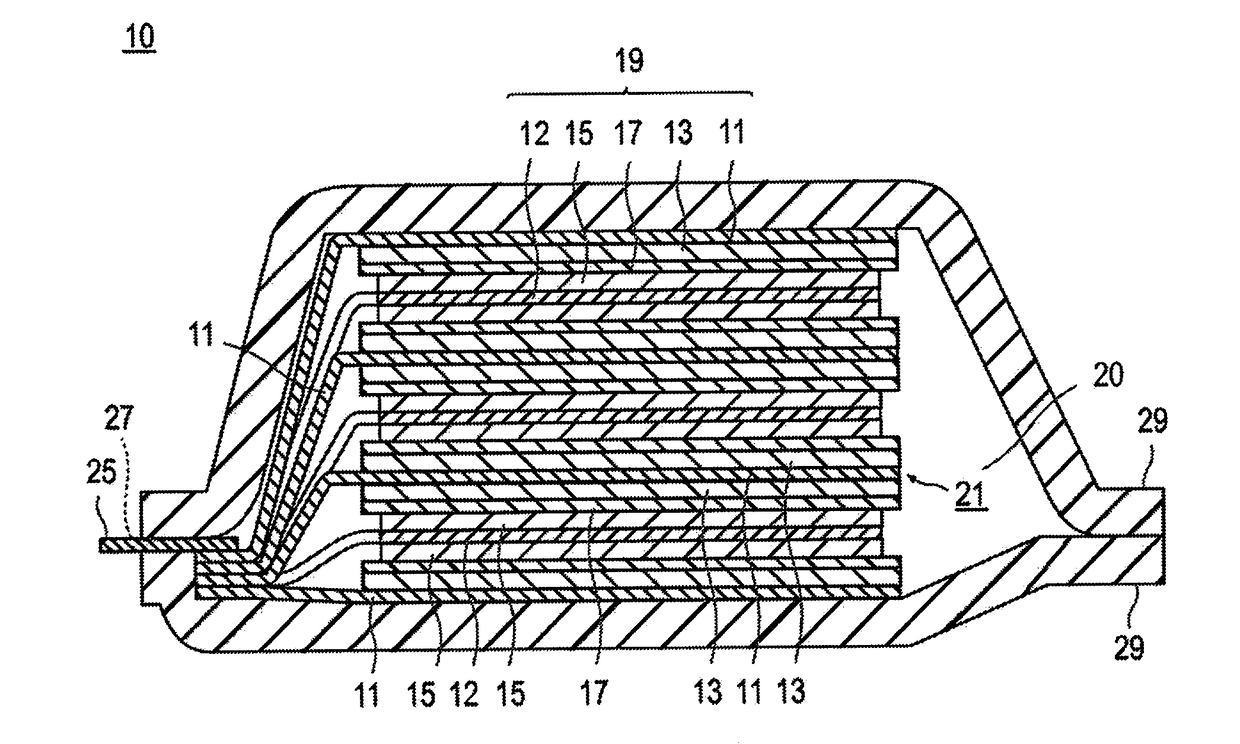Nonaqueous electrolyte secondary battery
a secondary battery and non-aqueous electrolyte technology, applied in the field of non-aqueous electrolyte secondary batteries, can solve the problems of not always achieving good performance and difficult to improve both battery characteristics at the same time, so as to improve the input/output characteristics (cell internal resistance) of the battery, the effect of cycle durability and storage durability
- Summary
- Abstract
- Description
- Claims
- Application Information
AI Technical Summary
Benefits of technology
Problems solved by technology
Method used
Image
Examples
reference example 1
[0148](1) Preparation of the Positive Electrode
[0149]95 mass % of NMC complex oxide (LiNi0.5Mn0.3CO0.2O2, average secondary particle diameter (D50)=10 μm), which is the positive electrode active material, 2 mass % of conductive carbon black (super-P) as a conductive assistant, 3 mass % of polyvinylidene fluoride (PVdF) as a binder, and an appropriate amount of N-methyl-2-pyrrolidone (NMP) as a slurry viscosity adjusting solvent were mixed to prepare a positive electrode active material slurry.
[0150]The obtained positive electrode active material slurry was applied to both sides of an aluminum foil as a positive electrode current collector (thickness: 20 μm) and dried for three minutes at 120° C., and then compression-molded by a roll press machine to prepare a positive electrode having a single-sided coating amount of the positive electrode active material layer (excluding the current collector) of 18 mg / cm2, and a density of the positive electrode active material layer of 3.1 g / cm3...
reference example 2
[0159]Other than using natural graphite (having an amorphous coating layer on the surface, average particle diameter (D50)=10 μm, BET specific area (SSA)=3.5 m2 / g) as the negative electrode active material, a laminate battery of Reference Example 2 was prepared using the same method as the Reference Example 1 described above. The negative electrode active material used here is also referred to as “active material (2).”
PUM
 Login to View More
Login to View More Abstract
Description
Claims
Application Information
 Login to View More
Login to View More - R&D
- Intellectual Property
- Life Sciences
- Materials
- Tech Scout
- Unparalleled Data Quality
- Higher Quality Content
- 60% Fewer Hallucinations
Browse by: Latest US Patents, China's latest patents, Technical Efficacy Thesaurus, Application Domain, Technology Topic, Popular Technical Reports.
© 2025 PatSnap. All rights reserved.Legal|Privacy policy|Modern Slavery Act Transparency Statement|Sitemap|About US| Contact US: help@patsnap.com



